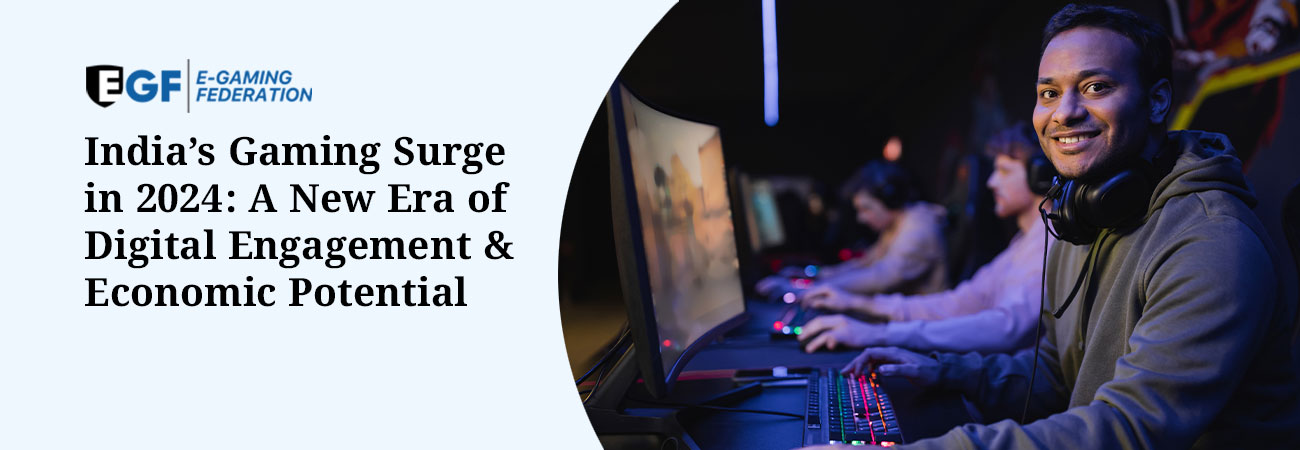

India’s digital gaming industry is no longer just a side story in the larger narrative of the tech economy, it is now front and centre, riding the wave of digital acceleration, affordable mobile data, and a demographic bulge of young, connected consumers. In 2024, the sector has reached a pivotal moment. From a rise in average playtime to deeper engagement across age groups and payment innovations like UPI, India's gaming ecosystem is becoming more complex, more lucrative, and more consequential to the digital economy.
The Indian gamer today is not limited to teenagers battling it out in shooter games. While youth continue to dominate the space, there’s now substantial participation from older demographics, including working professionals and even retirees. The average age of a gamer in India is shifting upward, and so are the types of games they play, ranging from casual puzzle games and fantasy sports to simulation, trivia, and strategy-based platforms.
According to 2024 industry trends, the 18–30 age group continues to form the core of the gaming population, driven by motivations such as stress relief, social interaction, skill-building, and competitive spirit. But what's striking is that nearly one-third of the gaming audience now falls into the 30–45 and 45+ age brackets. This indicates a broader societal acceptance of gaming as a legitimate form of entertainment, learning, and even income generation.
One of the defining features of India’s gaming boom is the integration of Unified Payments Interface (UPI). Seamless digital transactions have redefined in-game purchases, subscriptions, and participation in real-money gaming formats. Unlike in many Western markets where credit card penetration dominates, India’s UPI revolution has democratized access to digital payments, enabling gamers from Tier 2 and Tier 3 cities to transact with ease.
This shift is critical not only from a monetization standpoint but also for financial inclusion. Small-ticket transactions, from ₹10 add-ons to ₹500 subscription packs - are now commonplace. This has opened the door for local developers and indie studios to monetize efficiently while catering to a vast, budget-conscious market.
However, India’s meteoric gaming rise is not without its pitfalls. With increasing screen time comes a higher risk of compulsive gaming behaviours. These include binge-playing, disrupted sleep cycles, social withdrawal, and overspending, particularly among teens and young adults who may lack financial discipline or digital awareness.
The impact of problem gaming is multi-dimensional. It affects academic performance, mental health, interpersonal relationships, and even financial stability in extreme cases. That’s why responsible gaming practices are more urgent than ever. Game developers, educators, parents, and policymakers need to come together to ensure that young Indians can enjoy gaming safely, sustainably, and with awareness.
One of the most pressing needs in this space is the emphasis on legitimate gaming platforms. With the proliferation of illegal betting apps and unregulated operators, users are at risk of data theft, financial fraud, and exposure to harmful content. By choosing whitelisted, law-abiding platforms that are transparent in their operations, players can protect themselves and support a healthier industry.
User identification and KYC (Know Your Customer) mechanisms, now increasingly adopted by leading platforms, not only prevent fraud but also ensure that minors are not exploited. This also aligns with broader national interests around cybersecurity, digital payments safety, and consumer protection.
The growth of social gaming, where players connect, chat, and form digital communities, brings with it critical privacy concerns. Personal information, behavioural data, and payment history can be misused if not protected with robust digital security frameworks. Players must be educated on creating strong passwords, enabling two-factor authentication, and understanding the risks of sharing personal details online.
Moreover, grievance redressal mechanisms must be mainstreamed. Whether it's resolving a payment dispute, reporting online abuse, or appealing wrongful suspensions, gaming companies must offer accessible and responsive complaint resolution tools. Trust in the ecosystem will be built not only through innovation but also through accountability.
India’s gaming industry is not just growing, it’s maturing. It is no longer about flashy graphics or celebrity endorsements. It’s about creating platforms that are inclusive, ethical, and future-ready. The opportunity ahead is massive: from game design that integrates India’s cultural stories, to e-sports championships that put Indian players on the global map, to gamified education and digital skilling.
But the only way to truly harness this potential is through a well-regulated, consumer-first ecosystem. Industry bodies, regulators, and developers must prioritize transparency, safety, and fairness, while parents and educators must engage meaningfully with young players.
In the end, gaming in India is not just about entertainment, it is about identity, economy, and community. With the right checks and balances, this revolution can define a generation of empowered digital citizens.
